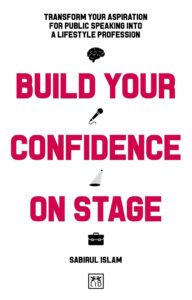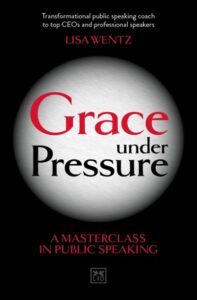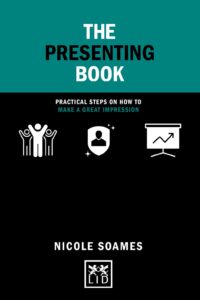|
How to improve your public speaking through breathing
By Guest Contributor Andrew P Bennett, Member of Toastmasters International
If you are a nervous speaker your audience may well notice the wobble in your voice. Similarly, if you get stuck speaking in a monotone, or with very little vocal range it will be hard for listeners to stay engaged.
The good news is that the answer to overcoming this is embedded in something we all do all the time – breathing. By working with your breath you can develop a dynamic, attractive speaking voice.
From my experience as a voice coach and public speaking teacher, I’d like to share some tips relating to posture and breathing. These will help you find your true voice.
I suggest finding a calm place where you can focus without interruption when trying out the suggested exercises.
Posture
Posture is very important for speakers. If you were going to play a musical instrument, a guitar, for example, you would learn how to hold the instrument to produce the most beautiful sounds. It is the same situation with our speaking voice. Whether we are standing or seated, we need to create the best conditions to take a breath.
So how do you stand? Your feet should be no more than shoulder-width apart, firmly feeling the ground beneath your feet. Align your posture so you can imagine a line proceeding up your legs, continuing up your spine. Your shoulders are back and relaxed, hands and arms comfortably by your sides in case you need them for gestures. You can imagine your head crowning your body.
There is nothing rigid or military about this position. Think of it as active, alert and springy and that you are ready to start speaking.
Breathe
Start by gently breathing out. We do this because we all have residual air in our lungs and taking even more air in on top will simply make us feel tense.
Maintaining your well-balanced, flexible posture place your thumb under your lowest rib at the side of your rib cage, with your shoulders still back and relaxed. Slowly and gently take a deep breath through your nose. You will feel a slight expansion of the rib cage. Then slowly and calmly breathe out.
This kind of breathing is quite different to the high in the chest, shallow breath which many people use in daily conversational speaking.
In a spoken presentation you will breathe through your mouth or nose as required. The benefit of working on taking the breath through the nose, when you are able, is that it warms the air as it passes through your body and there is less chance of feeling as though your voice is getting dry or hoarse.
Nonetheless, it is good for speakers and those who use their voices a great deal in their work to have easy access to drinking water because your vocal folds (or vocal cords as they used to be called) only work well when you are hydrated. Your voice needs humidity.
Expanding breath span
Having learned to find the sensation of this ‘low rib’ breath, which is anchored deep in your body, rather than high in your chest, you could practice your breath span. It’s recommended to only do so for 1 or 2 minutes at a time to avoid feeling lightheaded.
Take a low breath, then in your mind count to 5 slowly breathing out gradually: 1 2 3 4 5!
Rest for a moment, then take your ‘low rib’ breath and this time breathe out counting slowly in your mind to six. 1 2 3 4 5 6!
You can continue up to 10 or eventually beyond. But remember only 1 or 2 minutes of this type of exercise at a time before taking a pause.
If you practice this exercise over a number of days your body will accustom itself to a more settled, longer span of breathing out. You need this gentle, flowing span of breath to sustain a fine quality in your voice when speaking.
A bonus is that if you are feeling nervous before a speaking presentation of any kind, be it an online call with clients or perhaps a formal or social occasion speech, you will only need to focus on your breathing like this to remind your body of the healthy breathing reflex you have established with the exercise. This has the effect of reassuring you and making you appear poised to your audience.
Transform a breath into words
Now that you have established a good posture and breath it is time to transform that breath into words and expression. You can extend your breath span so that even longer sentences can be delivered comfortably without a feeling of running out of breath.
Here is a warmup routine using your settled, flowing breath.
Firstly, set up your good posture, take a low breath and hum a tune. I tend to use ‘Happy Birthday to You’ in my international workshops as it is a song that is familiar in one form or another in many cultures. It also has the advantage that the third line of the song is a little longer than the others and requires you to spin your breath a little further, expanding your capacities.
At first, breathe at the end of lines as you need to, but gradually try to do the first two lines ‘Happy Birthday to you, happy birthday to you’ in one breath.
Now do it again, maintain good, poised posture and ‘low rib’ breath. Sing it out loud with the words – it doesn’t matter whether you think you sing well or not. This is about warming up our voice for speaking and using that breath.
If you don’t like to use ‘Happy Birthday…’, there are many word rhymes or tongue twisters to be found online that you can use in a warmup as you steady your breath flow and extend your vocal range. Here is one example that has a great range of vowels and consonants. Take it steadily line by line. Allow the pitch of your voice to rise or fall naturally with the meaning of the words.
Does the man in the moon like music?
Does he tootle on his flute, or does he croon?
Does he slip in something lunar in the way he plays his tune?
Or does he simply sit and doodle on the moon?
The last element of your warmup before a speaking presentation is to try out loud the first few lines of your speech. Do this once or twice. It will help you ‘break the ice’ for yourself, as the last step in your preparation.
And finally
Always remember that if you have physical issues, a back or neck strain for example, try out the exercises somewhere that is safe for you and suits your specific situation. The aim is to create healthy reflexes over a period of time, so there is no need to push yourself.
Your well-aligned and flexible posture, a calm breath that is anchored low in your body, together with your facial expression and gestures will liberate you to speak confidently and engagingly to your audience, whether in person or online.
ABOUT THE AUTHOR

Andrew P Bennett is a member of Toastmasters International, a not-for-profit organisation that has provided communication and leadership skills since 1924 through a worldwide network of clubs. There are more than 400 clubs and 10,000 members in the UK and Ireland. Members follow a structured educational programme to gain skills and confidence in public and impromptu speaking, chairing meetings and time management. To find your nearest club, visit www.toastmasters.org
Suggested Reading
 Build Your Confidence on Stage covers The Speaker’s Psychology; The Principles of Public Speaking; The Performance Masterclass; and The Profession of a Public Speaker. These pillars will demonstrate how to overcome fear and anxiety, break general norms and stereotypes, analyse the pre, during and post-performance techniques, master the discipline and its practise before you begin to convert everything you’ve learnt into forming a lifestyle speaking career.
Build Your Confidence on Stage covers The Speaker’s Psychology; The Principles of Public Speaking; The Performance Masterclass; and The Profession of a Public Speaker. These pillars will demonstrate how to overcome fear and anxiety, break general norms and stereotypes, analyse the pre, during and post-performance techniques, master the discipline and its practise before you begin to convert everything you’ve learnt into forming a lifestyle speaking career.
 Grace Under Pressure solves this issue by unveiling three areas of training that great speakers use to develop their skills. In the first section, author Lisa Wentz shares techniques that she has developed to help anyone overcome inner obstacles so they can focus on developing their outward presence. The second section outlines how to best develop the physical aspects of speech, including posture, breathing, resonance, and articulation. And the third section centres on delivery: how to use pauses, word stress, and storytelling, among other techniques, to improve your performance from novice to master. This final section offers acting techniques and directorial advice that can be applied to speeches, pitches, presentations and meeting strategies.
Grace Under Pressure solves this issue by unveiling three areas of training that great speakers use to develop their skills. In the first section, author Lisa Wentz shares techniques that she has developed to help anyone overcome inner obstacles so they can focus on developing their outward presence. The second section outlines how to best develop the physical aspects of speech, including posture, breathing, resonance, and articulation. And the third section centres on delivery: how to use pauses, word stress, and storytelling, among other techniques, to improve your performance from novice to master. This final section offers acting techniques and directorial advice that can be applied to speeches, pitches, presentations and meeting strategies.

The Presenting Book is an inspiring and engaging handbook packed with Nicole Soames’ expert advice, practical tools and exercises. This book will teach you how to become a highly skilled presenter in all areas of your life – whether you’re presenting a sales report to the board, promoting your personal brand online, networking at an event or being the key-note speaker at a conference. You’ll learn how to develop your emotional intelligence, capture and hold peoples’ attention and deliver your performance with confidence.
